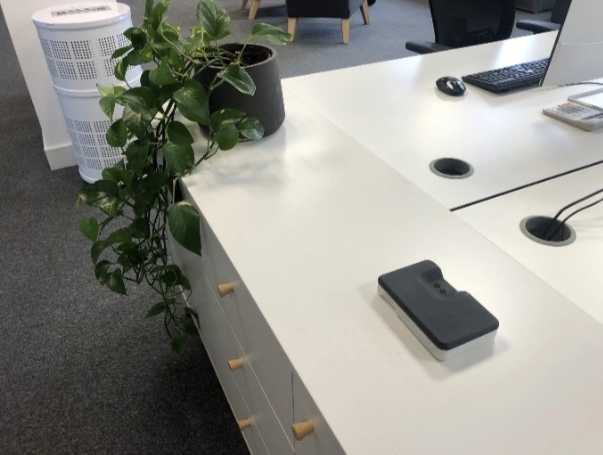This seems quite difficult when a large group of people are crowded in a small place where dust, dirt & debris are directly built up. Indoor air quality has an adverse impact on physical health, mood, cognitive function, focus, and productivity. For good health & well-being of occupants, improved air quality plays a pivotal role in HVAC buildings and maintaining a healthy & comfortable indoor environment.
According to the World Health Organisation (WHO), indoor air quality can be five times more contaminated than outdoor air. Breathing poor-quality air can be dangerous and cause a variety of health problems, ranging from asthma to lifelong respiratory illnesses.
If you want to foster a healthier, happier, and more productive workforce, here are the six prominent steps to improve indoor air quality in an HVAC building.
Tips to Improve IAQ in HVAC-Equipped Buildings
Routine Maintenance Matters
Timely HVAC maintenance includes changing air filters, cleaning ducts, and other components for the smooth & optimal performance of the air conditioning system. It’s advisable to have a professional inspection every year to examine & rectify the issues caused due to poor indoor air quality.
Ensure Proper Ventilation & Air Exchange
Adequate ventilation is essential for diluting and removing indoor pollutants. Make sure the HVAC system undergoes sufficient fresh air exchange by removing dust particles, mould, pollen & mist. Implement IoT solution systems that adjust the ventilation rate based on occupancy. However, proper exhaust systems in high-moisture areas remove contaminants & prevent the buildup of humidity.
Install High-Efficiency Air Filters
Utilising high-efficiency particulate air (HEPA) filters can significantly improve indoor air quality (IAQ) by trapping particles that are smaller than 0.3 microns such as dust, allergens, and even some viruses. High-performance filters capture fine particulate matter (PM2.5), pollen, mould spores, pet dander, and dust mites for efficient airflow without any inconvenience.
Control Humidity Levels
Maintaining adequate humidity levels helps in reducing the growth of mould, bacteria, and dust mites. Install dehumidifiers in areas prone to excess whereas in dry climates, go for humidifiers to prevent air from becoming too dry & leads to respiratory discomfort. On the other hand, use humidistats to monitor indoor moisture levels and alter HVAC settings accordingly.
Source Control & Pollution Reduction
It is critical to control the source of pollution before it becomes a serious problem.
- To prevent indoor air pollution, use paints, adhesives, and cleaning solutions that emit minimal volatile organic compounds (VOCs).
- Implement regular cleaning techniques (vacuuming with HEPA filters) to reduce dust, pet dander, and other allergens.
- Use non-toxic, hypoallergenic materials, and clean carpets and upholstery regularly to remove pollutants and allergies.
Use of Air Filters
HVAC systems play an important part in improving air quality, they work more efficiently when combined with air purifiers. Air filters utilise sensor technology that captures smaller air particles, dust, pollen, mist & mould perfectly from the indoor air for improved indoor air quality. Choose integrated air purifiers that use HEPA filters or activated carbon that can effectively remove airborne contaminants from the indoor environment.
How Energy Management Solutions Optimise HVAC Performance for IAQ
Energy management systems improve HVAC system performance by ensuring heating, ventilation, and air conditioning (HVAC) units operate at peak efficiency for improved indoor air quality (IAQ). Let’s have a look at other points.
Demand-Controlled Ventilation (DCV)
Demand ventilation can be implemented by energy management systems, which modify airflow according to the occupancy levels. DCV regulates ventilation rates to satisfy particular IAQ standards and guarantees fresh air circulation.
Monitoring and Adjusting Indoor Air Quality
Advanced sensors integrated into energy management systems help in monitoring IAQ parameters that include temperature, humidity, CO2, VOCs, & particulate matter (PM). The collected data enables the HVAC system to adjust the settings automatically to maintain a healthy indoor environment.
Improved Air Filtration
Air filtration optimisation techniques equipped in energy management systems stop the spread of harmful pollutants & prevent blocked filters to reduce airflow & raise energy costs.
Automated Scheduling for Peak Performance
To maintain building comfort and optimise indoor air quality, energy management solutions offer automatic scheduling tools to operate HVAC systems during off-peak hours. Proper scheduling systems help to cut down wasteful energy consumption & save energy expenses.
Predictive Maintenance for HVAC Systems
Energy management systems use predictive maintenance technologies to anticipate any HVAC malfunctions that worsen indoor air quality. Timely repairs are mandatory to avoid problems that include dirty coils, malfunctioning fans, ductwork leaks & other issues to maintain ideal IAQ.
Real-Time IAQ and Energy Analytics
Via energy management solutions, facility managers can track trends and make changes or enhancements by analysing real-time data. This enables smarter decision-making for future upgrades and ensures a comfortable and healthy workspace for the occupants.
Enhanced Ventilation in High-Pollution Areas
Energy management systems automatically activate additional ventilation & filtration when the pollutant level rises. During the high rise of pollutant levels, this advanced system optimises energy use & allows businesses to prioritise cleaner & healthier indoor environments.
Conclusion
Improved indoor air quality (IAQ) in HVAC-equipped buildings creates a more comfortable & healthier indoor atmosphere for the residents. By adhering to six prominent tips, you can successfully improve air quality & control humidity, ventilation, and indoor pollutants effectively. For enhanced building occupant well-being, a proactive IAQ maintenance approach resulting in long-lasting HVAC systems & higher energy efficiency for safe & healthier spaces.



